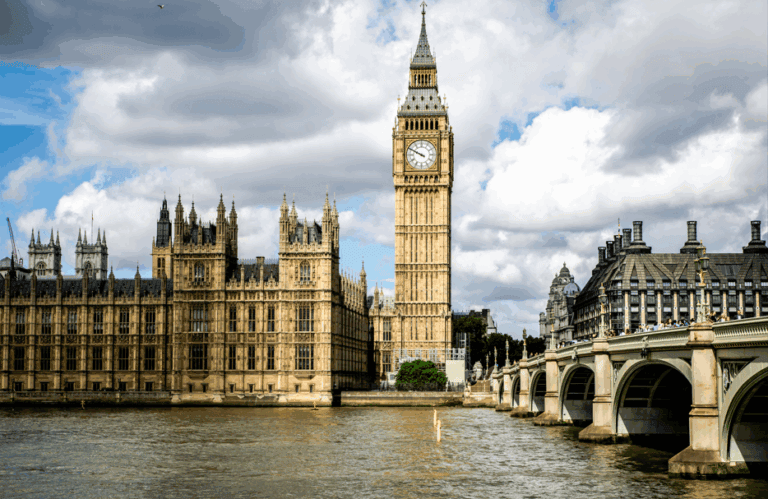Storms, climate change and how we make our cities resilient

Is climate change making storms worse in the UK?
In short, yes. The Met Office has found that human-induced climate change has increased the amount of rain that’s deposited during UK storms. A recent study demonstrated that climate change means that storms are not only occurring more frequently but also increased rainfall means they are 20% more intense. Scientists are less clear on the link between wind gusts and climate change, but some research has identified link between warming and the occurrence of extreme windstorm events in the UK. Indeed, storms are just one of many climatic hazards faced by the UK. However, they often compound with other events – such as drought or coastal erosion – magnifying their individual impact and causing more damage.
What is the difference between summer storms and winter storms?
One of the key impacts of climate change is that storms that will cause significant damage can occur in the summer and winter. Winter storms tend to be characterised by high wind, storm surge and heavy rainfall. A recent example is the 2021 Storm Arwen that badly impacted Wales, and North West England & Scotland. On the other hand, summer storms often occur after periods of hot weather and are characterised by lightning, thunder and more intense rainfall. The UK is less prepared for these events – particularly when the storms follow periods of drought. A recent example is the summer of 2022 – following highs of 40C intense rain storms came that caused a lot of surface flooding in London. Famously, several tube stations had to be closed due to water inundation.
What impact do storms have on our buildings and cities?
Storms physical damage buildings
Storm damage to buildings can range from the slight to the significant, and it can be hard to predict how significant damage will be. For example, damage from high winds can be as slight as roof tiles or other external fixings being lost to as significant as trees blowing over and crashing into buildings, destroying much of their structure. Alongside water damage after flooding has subsided, heavy rainfall can lead to road damage as the pressure causes fissures and potholes in the tarmac. In the most extreme cases, lightning in thunder storms can lead to wildfires that can lead to the loss or damage of property. Currently, wildfires are relatively rare in the UK, but will become more of a hazard as the planet continues to warm.
Storms disrupt the economy
Storms are expensive. Between 2010 and 2019 storms cost the UK around $1.6bn, but by 2030-2039 this is estimated to rise to $3.8bn. Clean up efforts and repairs are expensive for insurance companies, individual property owners and the government. In addition, intense storms often lead to events being cancelled and transport methods being restricted. This prevents tourists and visitors from attending attractions, and can limit many profession’s ability to work. Outside of our urban area, storms can be devastating to the growing of crops. For example, in the winter fields may not be able to be ploughed and planted if intense rain has turned them into a quagmire, and in the summer poorly timed heavy rainfall can significantly damage cereal crops.
Storms can lead to flooding
Finally, the link between increased intensity of storms and increased flooding events cannot be ignored. More storms can mean more surface and coastal flooding, whether that’s from the watershed not being able to handle the rain’s intensity or due to high winds causing significant storm surge. Indeed, a type of flooding that is becoming even more common is for a period of drought to be followed by an intense summer storm. When the ground has been ‘baked’ during a drought, it is less water permeable and water does not absorb into the ground and reach the water table as it should. This can lead to water levels rising quickly as natural water wicking solutions are less effective.
Want to learn more about building a specifically flood proof city? Explore our blog here.
How do we adapt our buildings and cities to these storm events?
Improve the resilience of existing infrastructure
We need to ensure that the infrastructure we already have: bridges, electricity lines, roads, railways and pipes are able to withstand the physical impacts of storms. This could look like ensuring they can cope with excess water from heavy rainfall: for example, making the culverts under roads large enough to cope with high water levels in rivers or installing robust drainage on our roads and bridges to reduce flooding. Or, it can look like adapting to high winds – reinforcing the stability of power lines and high bridges to ensure they are prepared for stronger winds than we historically designed for.
Invest in coastal resilience
A lot of the damage caused in storms are to our coastal towns and cities, as high winds cause storm surge – for example in December 2013 a storm surge on the east of England and Scotland led to 1,710 homes flooding and two deaths. Therefore, as our storms get stronger it’s important that we build resilience on our coastline to dampen the impacts of storm surge. Traditionally, this looks like sea walls or storm barriers – but increasingly there’s an interest in rewilding marshlands and natural spaces along our coast. Specifically, this could look like living shorelines that are a mixture of natural approaches and hard approaches that buffer incoming surge due to high winds. This buffer ultimately reduces flooding and the impact on buildings and infrastructure.
Retrofit stronger fixtures and fittings
Often in storms, lots of buildings face a small amount of damage – for example losing roof tiles or other external fittings. Ensuring that buildings and their elements are clean and well secured is important. For example, keeping guttering clear can help as well as strengthening roof flashing to reduce the risk of leaks. On a more significant scale, in areas particularly vulnerable to high winds, high impact windows can be installed as well as storm shutters – to help reduce the likelihood of the glass breaking. Most homes will not need all of the stronger fixtures and fittings that can be designed for storms, but with individual risk assessments, small changes can bring a lot to build a building’s resilience.
Carefully consider new buildings
When building new developments, it’s important to consider the physical risk they face from potential storms. This could look like ensuring buildings have a considerable natural or hard buffer between them and the coast to reduce impacts from storm surge, or not developing on land that frequently floods after heavy rains. Placement for wind is even important, as the construction of buildings can lead to wind being funneled and strengthened, making it more likely to cause damage.
What is UKGBC doing to improve the UK built environment’s resilience to storms?
In recent years, UKGBC has been working closely on resilience – looking at a wide range of issues including storms. In fact, our upcoming Climate Resilience Roadmap highlights storms as one of the five key hazards that the UK faces due to climate change. The roadmap outlines key steps for built environment practitioners and policy makers to make our towns, cities and infrastructure resilient to the impacts of storms. It makes the adaptation to these issues straightforward, whilst anticipating the complexities of climate resilience projects.
Related
Unveiling the Climate Risks: Voices from UK’s Built Environment


Embodied Carbon Summit 2025

UKGBC announces new Regenerative Places Framework Task Group


